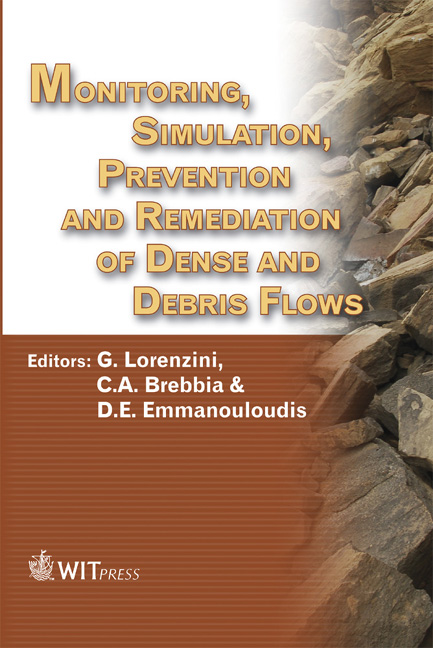Failure Mechanics Of Joined Rock Mass
Price
Free (open access)
Transaction
Volume
90
Pages
10
Published
2006
Size
2,549 kb
Paper DOI
10.2495/DEB060241
Copyright
WIT Press
Author(s)
J. Vacek & S. Sedláčková
Abstract
Failure of rock mass is not a static process, but has its own history. Its duration varies from several seconds to several hundreds years. Rock mass movements are often hundreds of metres and significantly change its original shape. Failure mechanics can be studied experimentally. On nonhomogeneous models we can observe the onset of failure (prior to and during the failure deformations increase on sliding surfaces), the chronology of various stages of failure (cave-ins, slides), and the final shape of rock mass. We can also observe influences, exerted by modelled joints, adits and other features, upon the failure history and shapes of cave-ins and slides. Methods used for the study of geotechnical problems are based on two presumptions: •results must be time dependent •results must allow the creation of joints in the rock mass before the study event and during the event must allow movement of rock along the joints, opening of the joints and creation of new joints. The direction of modelled joints must be similar to reality, i.e. their direction and inclination must be the same as in real-life. These measures make it possible to create the structure of modelled rock mass similar to real ones. The filling of cracks must be equivalent to real ones. As a basic method of study of the geotechnical problems of caving and rock pillar with adit and joints, scale physical models were used from equivalent materials. Slips and bumps were also studied mathematically. The solution must allow an extrusion of rock into an open space (for bump study only). Keywords: mining, rock mechanics, mathematics and physical modelling, joints, rock pillar, cave-in, rock burst, bump.
Keywords
mining, rock mechanics, mathematics and physical modelling, joints, rock pillar, cave-in, rock burst, bump.





